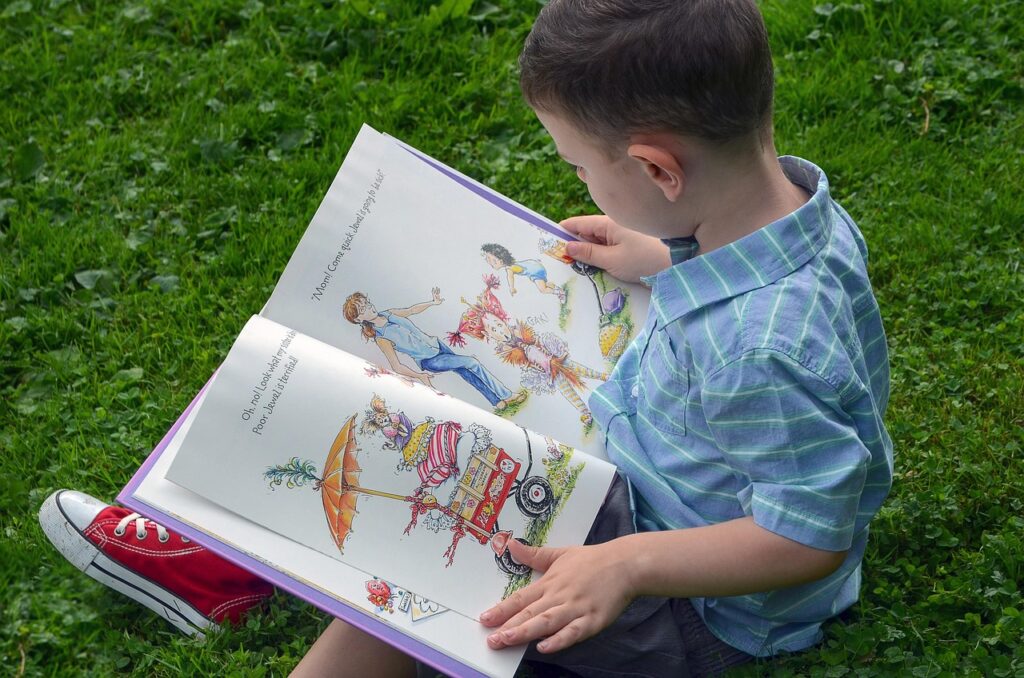How to Market Your Children’s Book and Get It in Front of Readers

Social Media Strategies for Promoting Your Children’s Book
When it comes to marketing your children’s book, social media can be a game-changer. With millions of users scrolling through their feeds every day, it’s the perfect platform to connect with potential readers and their parents. So, how do you effectively use social media to promote your book? Let’s dive into some strategies that can help you get your story in front of eager eyes.
First off, it’s essential to choose the right platforms. While Facebook and Instagram are popular choices, don’t overlook Pinterest and TikTok, especially since they cater to a younger audience and their parents. For instance, Pinterest is a treasure trove for parents looking for educational resources and fun activities, making it a great place to share visuals related to your book. You can create eye-catching pins that showcase illustrations, quotes, or even activities inspired by your story. Meanwhile, TikTok has exploded in popularity, and its short video format can be a fun way to engage with your audience. Consider creating playful videos that highlight your book’s themes or characters, or even share behind-the-scenes glimpses of your writing process.
Once you’ve chosen your platforms, it’s time to create engaging content. Remember, social media is all about connection, so don’t just promote your book; tell a story. Share snippets of your writing journey, the inspiration behind your characters, or even fun facts about the book. This not only builds anticipation but also helps readers feel more connected to you as an author. Additionally, consider using visuals. Children’s books are often rich in illustrations, so share vibrant images that capture the essence of your story. A colorful post can catch the eye of a scrolling parent, making them more likely to stop and take notice.
Engagement is key in the social media world, so don’t forget to interact with your audience. Respond to comments, ask questions, and encourage discussions. For example, you might post a question like, “What’s your child’s favorite bedtime story?” This not only invites engagement but also gives you insight into what resonates with your target audience. Moreover, consider hosting giveaways or contests. Everyone loves free stuff, and offering a signed copy of your book or related merchandise can create buzz and excitement. Just make sure to follow the rules of each platform regarding promotions.
Collaborating with other authors or influencers can also amplify your reach. Look for fellow children’s book authors or parenting bloggers who share a similar audience. You could do a joint Instagram Live session, where you discuss writing tips or share your favorite children’s books. This not only exposes you to their followers but also builds a sense of community among authors. Additionally, consider reaching out to local schools or libraries. They often have social media pages and might be willing to share your book with their audience, especially if you offer to do a reading or a workshop.
Finally, don’t forget to track your efforts. Use analytics tools provided by social media platforms to see what types of posts resonate most with your audience. This will help you refine your strategy over time. Remember, marketing is a journey, and it’s all about finding what works best for you and your book. By leveraging social media effectively, you can create a vibrant community around your children’s book, making it easier to connect with readers and share the joy of storytelling. So, get out there, start posting, and watch your audience grow!
Building an Engaging Author Website to Attract Young Readers
Creating an engaging author website is one of the most effective ways to market your children’s book and connect with young readers. In today’s digital age, your website serves as a virtual storefront, a place where parents and kids can discover your work, learn about you, and engage with your stories. So, how do you build a website that not only attracts attention but also keeps visitors coming back for more? Let’s dive into some key elements that can help you create an inviting online space.
First and foremost, the design of your website should be visually appealing and kid-friendly. Bright colors, playful fonts, and engaging images can create an inviting atmosphere that resonates with both children and their parents. Think about incorporating illustrations from your book or even fun graphics that reflect the themes of your stories. This not only showcases your work but also sets the tone for what visitors can expect. Remember, a cluttered or overly complicated design can be overwhelming, so aim for a clean layout that’s easy to navigate.
Once you have the visual aspect down, it’s time to focus on content. Your website should include a dedicated section for your book, complete with a captivating description, age recommendations, and links to purchase. But don’t stop there! Consider adding a blog where you can share insights about your writing process, tips for parents on reading with their children, or even fun activities related to your book. This not only provides value to your visitors but also helps establish you as an authority in the children’s literature space.
Moreover, interactive elements can significantly enhance the user experience. Think about including games, quizzes, or downloadable coloring pages that tie into your book. These features not only engage young readers but also encourage them to spend more time on your site. When kids have fun exploring your website, they’re more likely to develop a connection with your work and share it with their friends.
In addition to engaging content, it’s essential to create a space for community interaction. Consider adding a comment section or a forum where parents and kids can discuss your book, share their thoughts, or even post their own creative works inspired by your stories. This sense of community can foster loyalty among your readers and encourage them to return to your site for more.
Of course, no author website is complete without a way to stay in touch. Including a newsletter sign-up form is a fantastic way to build your email list. You can offer exclusive content, such as sneak peeks of upcoming books or special promotions, to entice visitors to subscribe. This not only keeps your audience engaged but also allows you to communicate directly with them about new releases or events.
Finally, don’t forget to optimize your website for search engines. Using relevant keywords related to children’s literature and your specific book can help improve your visibility online. This means that when parents search for children’s books or related topics, your website has a better chance of appearing in the results.
In conclusion, building an engaging author website is a crucial step in marketing your children’s book. By focusing on appealing design, valuable content, interactive features, community engagement, and effective communication, you can create a space that attracts young readers and keeps them coming back for more. So, roll up your sleeves and start crafting a website that reflects your passion for storytelling and connects with your audience in meaningful ways.
Collaborating with Schools and Libraries for Book Exposure
When it comes to marketing your children’s book, one of the most effective strategies is collaborating with schools and libraries. These institutions are not only central to a child’s education but also serve as vital hubs for community engagement. By partnering with them, you can significantly increase your book’s visibility and reach your target audience more effectively. So, how do you go about making these connections?
First, consider reaching out to local schools. Teachers and librarians are always on the lookout for fresh, engaging content to share with their students. Start by introducing yourself and your book, highlighting its themes and how it aligns with educational goals. For instance, if your book teaches valuable life lessons or incorporates elements of science or history, make sure to emphasize that. Schools often appreciate books that can complement their curriculum, so don’t hesitate to showcase how your story can spark discussions or enhance learning.
Once you’ve made initial contact, think about offering to host a reading or a workshop. This not only gives you a platform to showcase your book but also allows you to interact with children directly. Kids love stories, and when they see the person behind the book, it creates a personal connection that can lead to increased interest. You might even consider creating activities or discussion questions related to your book to engage the students further. This interactive approach can make your book memorable and encourage kids to ask their parents for a copy.
In addition to schools, libraries are another fantastic avenue for exposure. Libraries often host events like story hours, author talks, and book fairs, which can be great opportunities for you to present your work. Reach out to your local library and inquire about upcoming events where you could participate. Many libraries are eager to support local authors, and they may even have programs specifically designed to promote new books. By collaborating with them, you not only gain access to a wider audience but also establish yourself as a part of the community.
Moreover, consider donating copies of your book to schools and libraries. This gesture not only helps get your book into the hands of young readers but also shows that you’re invested in supporting literacy and education. Many schools and libraries have limited budgets, so your donation could make a significant impact. In return, they might feature your book in their collections or promote it during events, giving you additional exposure.
As you build these relationships, don’t forget the power of social media. Share your experiences collaborating with schools and libraries on platforms like Instagram or Facebook. Tag the institutions you’re working with, and encourage them to share your posts as well. This not only broadens your reach but also fosters a sense of community around your book. Engaging with parents and educators online can create buzz and excitement, leading to more interest in your work.
In conclusion, collaborating with schools and libraries is a smart and effective way to market your children’s book. By building relationships with educators and librarians, hosting events, and donating copies, you can create meaningful connections that will help your book reach its intended audience. Remember, it’s all about creating a community around your story, and these institutions are the perfect place to start. So, roll up your sleeves, reach out, and watch your book find its way into the hearts and hands of young readers.
